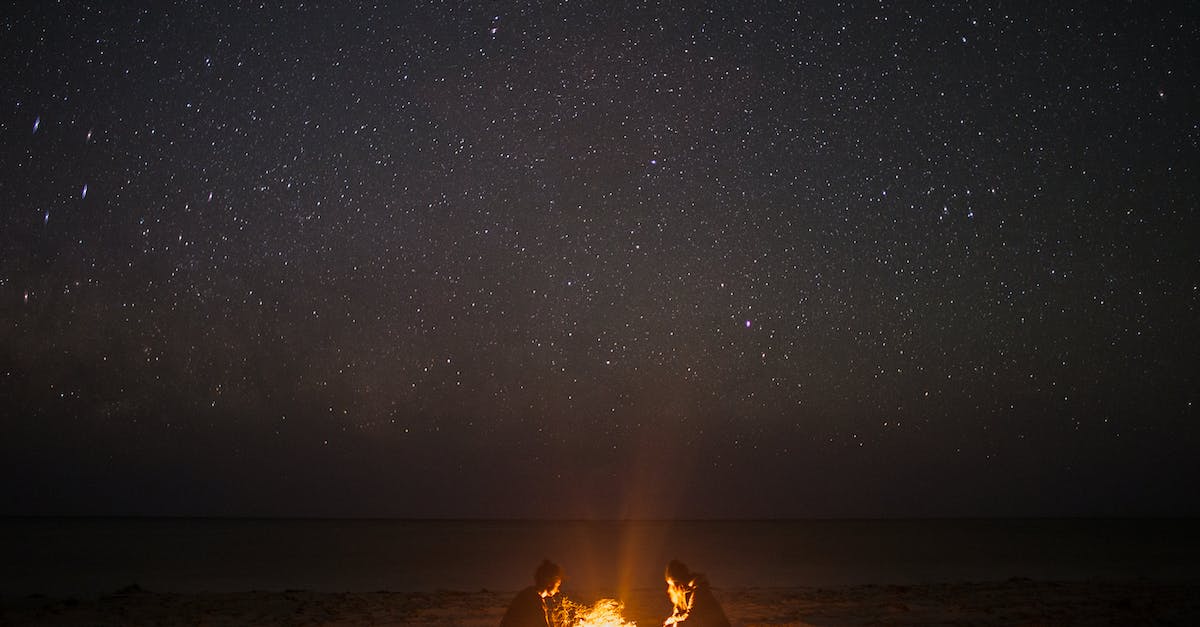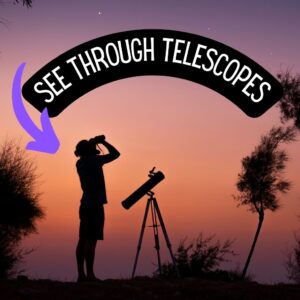This site contains affiliate links to products. I may receive a commission for purchases made through these links.
Astronomy tourism’s on the rise, drawing stargazers worldwide to some of the most breathtaking celestial viewing spots. But as this niche tourism sector grows, so does the challenge of preserving these sites’ natural beauty. It’s a delicate dance — balancing the need for tourism revenue with the importance of safeguarding these celestial sanctuaries.
The lure of dark skies, free from light pollution, is undeniable. These astronomy hotspots are not just about the stars; they’re about the untouched landscapes, the quiet, the solitude. But as more tourists flock to these sites, we risk losing what makes them so special.
How do we keep the allure of these sites alive without destroying their essence? It’s a question that’s been on my mind, and I’m sure it’s been on yours too. Let’s delve into the complexities of this issue and explore potential solutions together.
The Rise of Astronomy Tourism
Astronomy tourism is taking off with a dynamic trajectory that parallels the night sky’s interstellar voyages. From stargazing retreats to modern planetariums to meteor shower viewing parties, astronomy tourism has infiltrated mainstream culture, yielding an insatiable thirst to experience the universe’s marvels firsthand.
Why this sudden interest you may ask? Well, it’s a blend of increased accessibility, science’s popularization, and ubiquitous curiosity. Since space travels became more affordable and convenient, it opened the doors to the magical world of celestial bodies. Shows like Neil deGrasse Tyson’s Cosmos: A Spacetime Odyssey and iconic events such as the Great American Solar Eclipse have nurtured a fascination for the broader universe.
Data on global tourism trends further delineate the scale of this burgeoning trend:
| Astronomy Tourism Trend | Year | Percentage Increase |
|---|---|---|
| Visitors at space observatories | 2017-2020 | 21% |
| Participants in stargazing retreats | 2019-2021 | 15% |
| Searches for “best astronomy sites” | 2015-2021 | 25% |
The uptrend of these metrics illuminates the astronomical growth of this sector with visitors flocking to pristine viewing spots worldwide: from Arizona’s Kitt Peak National Observatory to Namibia’s NamibRand Nature Reserve, and even Australia’s Aoraki Mackenzie International Dark Sky Reserve.
However, this surge in interest also comes with its fair share of challenges; especially when it comes to preserving these untouched landscapes. Each year, hordes of tourists impact the solitude and natural beauty of these celestial havens. With increase in footfalls come the threats of light pollution, habitat disruption, and cultural disrespect.
As we delve further into the future of astronomy tourism, we will need to consider sustainable practices that ensure we don’t lose the very essence of these spaces that attract us in the first place. While there’s a long journey ahead, there’s ample reason for optimism; for as vast as our universe is, so too is human creativity and resilience in overcoming obstacles. Advancements in technology, stricter regulations, and increased awareness amongst tourists are just some of the tools we can deploy to ensure these special sites remain starry sanctuaries for generations to come.
The Importance of Preserving Astronomy Sites
Astronomy tourism isn’t just about stargazing. It’s steeped in the appreciation of our natural world and the desire to explore the vast, mysterious cosmos that stretches out beyond the confines of our planet. It’s an industry that takes us back to our roots, reminding us of our connection to the universe.
But, as we’ve seen, the surge in astronomy tourism also comes with significant challenges. One of them is undoubtedly the need to safeguard the untouched beauty of these celestial observatories and stargazing spots. We can’t turn a blind eye to the repercussions of increased footfall at these sites.
Preservation of these astronomy sites isn’t merely for aesthetic appeal or maintaining the optical quality of the sky view; it’s crucial for scientific research and data collection as well. Light pollution is a vital concern here. The excessive or misdirected artificial light from tourist inflow can seriously interfere with the night sky’s visibility, affecting astronomical research.
What’s more, these sites often serve as habitats for various flora and fauna. Prolonged human interference could disrupt their natural life cycles, leading to detrimental impacts on biodiversity.
Encouragingly, several initiatives have sprung up worldwide, emphasizing sustainable tourism. These endeavors strive for a balance – making these celestial spectacles accessible to the curious while minimizing the environmental impact.
We’re seeing marvels like the development of environmentally-friendly tourist facilities, green lighting solutions to counter light pollution, and the promotion of responsible tourist behavior. It’s also vital to raise awareness about the fragility of these sites, encouraging visitors to tread lightly and leave no trace.
Contextual, in-depth, and up-to-date data on this crucial area of astronomy tourism could guide better policy-making, regulations, and best practices. For instance, a clear understanding of visitor trends and behavior at these sites could help formulating strategies for crowd management, site maintenance, and education initiatives.
As we delve deeper into the realm of astronomy tourism, we need to bear in mind that preservation isn’t just about keeping things as they are. It’s about ensuring a future where these sites continue to inspire awe and wonder in the hearts of space enthusiasts and astronomers across the globe.
The Challenges of Balancing Tourism and Preservation
The challenge to sustain the delicate trapeze act of tourism and preservation in popular astronomy sites is substantial. The surge in astronomy tourism certainly puts unwelcome pressure on these celestial hotspots. As I’ll delve into the nitty-gritty, you’ll recognize that solutions aren’t as simple as bolting the gates and switching off the welcome sign.
The primary devil we’re wrestling with is light pollution, and it’s proving to be a tough adversary. Light pollution – uncontrolled, unnecessary artificial lighting – robs these sites of their splendor. Stars fade into the background while the night sky loses its humbling, expansive quality. Tourism infrastructures often exacerbate this issue. Hotels, restaurants, and other public amenities contribute to the escalating light pollution problem.
What’s more, the intense traffic brought on by hordes of tourists can wreak havoc on local ecosystems. These sites are frequently dwelling points for unique species relying on the constant of darkness for survival. Disturb this delicate balance and it can lead to the extinction of species and the loss of biodiversity.
The key quandary here is – how can we support the burgeoning interest in astronomy while simultaneously preserving the pristine condition of these sites, both for the sake of scientific research and biodiversity?
Efforts have been launched to educate tourists and local communities, leveraging the power of awareness. These initiatives address responsible behaviors, promoting dark sky-friendly outdoor lighting, and advocating for sustainable tourism practices.
Nonetheless, we also need to underscore the lack of consistent, data-driven policies. Sure, we have in-depth data and scientific knowledge. Yet, the translation of this knowledge into effective and actionable policies leaves much to be desired.
While progress is slow, it’s clear that the stakes are too high to let complacency set in. The call to protect our celestial viewing spots is urgent and vital. We must all answer this call – scientists, policy makers, tourists, and local communities alike – united in preserving our shared heritage of the night sky. Believing in a future where these sites continue to inspire awe and wonder for astronomy and space enthusiasts worldwide.
Strategies for Sustainable Tourism in Astronomy Sites
To combat the problems of light pollution and ecosystem damage at popular astronomy sites, a shift towards sustainable tourism is crucial. I’ve identified key strategies that could be implemented.
Firstly, educating tourists about the importance of these sites is a fundamental step. From the danger of light pollution to the significance of local ecosystems, tourists should be aware of their impact. Clear signage, informative brochures, and knowledgeable guides can surely play a vital role here.
Secondly, the application of data-driven policies is necessary. Hard data can provide invaluable insights into how these sites are being affected by tourism. Therefore, consistent monitoring, recording, and analysis of relevant metrics such as light levels, visitor numbers, flora and fauna counts is essential to inform effective policies.
Furthermore, collaboration among all stakeholders can lead to innovative solutions. This includes scientists, policymakers, tourists, and local communities. By working together, they might collectively create effective strategies for sustainable tourism at these astronomy sites.
Investing in sustainable infrastructure is also a critical element. This includes using low light-emitting technologies, efficient waste management systems, and eco-friendly facilities. For easier understanding, the table below presents the mentioned strategies and its brief explanation.
| Sustainable Tourism Strategy | Brief Explanation |
|---|---|
| Education | Informing tourists about the significance of the astronomy sites and their impacts |
| Data-driven Policy | Policies developed based on hard data (e.g., light levels, visitor numbers, etc.) |
| Stakeholder Collaboration | Teamwork among scientists, policymakers, tourists, and communities |
| Sustainable Infrastructure | Low light-emitting technologies, eco-friendly facilities |
By paying heed to these aspects, we could pave the way for a more balanced coexistence between tourism and preservation in popular astronomy sites. This way, these celestial viewing spots continue to inspire, without causing harm.
Conclusion
It’s clear that we’re at a crossroads. We must strike a balance between embracing the awe-inspiring beauty of our universe and protecting the sanctity of these precious astronomy sites. Light pollution and ecosystem disruption are serious threats, but they’re not insurmountable. With sustainable tourism practices, we can lessen our impact. Education is a powerful tool in this respect, illuminating the importance of these sites and fostering a deeper appreciation among tourists. Data-driven policies and stakeholder collaboration are also vital, steering us toward a future where these sites remain beacons for astronomy enthusiasts. It’s a challenging path, but with thoughtful investment in sustainable infrastructure, we can ensure these sites continue to inspire for generations to come.
1. What is the main issue discussed in the article?
The main issue discussed in the article is the challenge of maintaining a balance between tourism and preservation in popular astronomy sites. There’s concern over the negative impact of tourism on these sites, particularly with regards to light pollution and damage to local ecosystems and biodiversity.
2. What negative impact does tourism have on popular astronomy sites?
Tourism can negatively impact popular astronomy sites by causing light pollution and harm to local ecosystems and biodiversity. Excessive artificial light disrupts celestial visibility, impeding astronomical observations. High visitor numbers can also result in inadvertent damage to local natural habitats.
3. What is the role of sustainable tourism practices in preserving astronomy sites?
Sustainable tourism practices are essential in minimizing the adverse effects of tourism on popular astronomy sites. These practices aim to educate tourists on the significance of these sites, promote responsible behavior, and ensure that infrastructure and policies are in place to mitigate harm.
4. What are the suggested solutions to address the tourism issues?
The article suggests data-driven policies, collaboration among stakeholders, and investment in sustainable infrastructure as potential solutions. It emphasizes the need for collective responsibility and informed action to safeguard these sites for future generations.
5. What is the overall goal for the future of popular astronomy sites?
The overall goal for the future of popular astronomy sites is to ensure they continue to inspire awe and wonder for astronomy enthusiasts worldwide. This entails preserving their astronomical, ecological, and cultural value through sustainable tourism and enlightened stewardship.




